
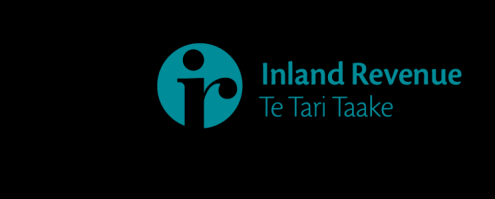

[IN CONFIDENCE RELEASE EXTERNAL]
25OIA1281
07 October 2024
Timothy Goddard
[FYI request #28336 email]
Dear Timothy Goddard
Thank you for your request made under the Official Information Act 1982 (OIA), received on 9
September 2024. You requested the following:
I would like to be able to scrunitise the claims that the processing steps taken effectively
anonymise the data released to these companies. Accordingly, I am requesting technical
documentation you hold on:
1. The data format in which data about individuals are released to Google, Facebook
(Meta), and LinkedIn. Details of exactly how this data is transferred are not required,
just the format this data is in.
2. Which personal identifiers (e.g. name, date of birth, address, IRD number) are either
directly included in those lists, or are used as input to any hashed or encrypted field
in those lists.
3. The technical specifications of hashing and encryption processes applied.
4. Any internal analysis on the risk of re-identification of these hashes (excluding legal
advice subject to privilege).
Those are broken into bullet points to make the scope clear, but please don't feel they
need to be answered one-by-one. A single document could well answer multiple points.
Information requested
Question 1
The custom audience feature allows businesses and government departments to upload de-
identified information (referred to as hashed information) to the platform, for direct marketing
purposes. This data is hashed within our browser before being securely uploaded to the social
media platform and is uploaded in the format of a CSV file
.
Hashing takes a piece of data - like an email address - and uses math to turn it into numbers
and letters (called a hash). For example, [email address] may come out hashed as
wLKziR/6RoXDv1MDaXLH1UNUC9nIVr97jrTnL4TcxsM=.
Question 2
Identifiers used include first name, surname, date of birth, email address, phone number, city,
postal code and country. As mentioned above, this data is hashed within our browser before
being securely uploaded to the social media platform.
Page 1 of 3

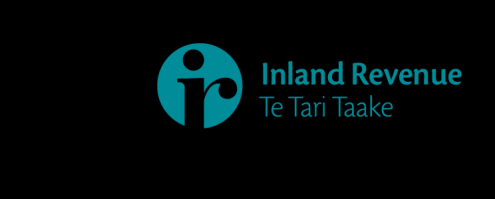
[IN CONFIDENCE RELEASE EXTERNAL]
25OIA1281
Question 3
All platforms use the secure hashing algorithm SHA-256 which is compliant with the New Zealand
Information Security Manual. The data is transmitted from an Inland Revenue device to the
platforms through an encrypted channel (HTTPS e.g. TLS protocol).
Question 4
A privacy impact assessment helps identify whether a project will impact on people and their
information, how any risk can be reduced and ensures the project complies with the Privacy Act
2020.
The following privacy impact assessments are enclosed as
Appendix A:
Date
Document Title
Decision
1.
September 2016
Use of Facebook’s Custom Audience for
Released in full
advertising campaigns – Brief Privacy
Analysis
2.
September 2024
Use of Custom Audience on social media for Released in full
advertising campaigns – Privacy Threshold
Assessment
Inland Revenue conducted a privacy impact assessment in 2016. In September 2024, Inland
Revenue conducted a new privacy impact assessment to assess the use of custom audience on
social media for advertising campaigns. This version contains more detail, but the privacy impact
rating is the same.
Right of review
If you disagree with my decision on your OIA request, you can ask an Inland Revenue review
officer to review my decision. To ask for an internal review, please email the Commissioner of
Inland Revenue at
: [email address].
Alternatively, under section 28(3) of the OIA, you have the right to ask the Ombudsman to
investigate and review my decision. You can contact the office of the Ombudsman by email at:
[email address].
If you choose to have an internal review, you can still ask the Ombudsman for a review.
Page 2 of 3

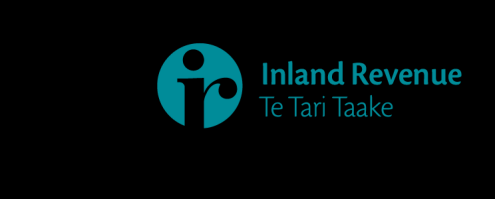

[IN CONFIDENCE RELEASE EXTERNAL]
25OIA1309
Publishing of OIA response
We intend to publish our response to your request on Inland Revenue’s website
(ird.govt.nz) as
this information may be of interest to other members of the public. This letter, with your personal
details removed, may be published in its entirety. Publishing responses increases the availability
of information to the public and is consistent with the OIA's purpose of enabling more effective
participation in the making and administration of laws and policies and promoting the
accountability of officials.
Thank you again for your request.
Yours sincerely
Pip Knight
Service Leader, Marketing & Communications
Page 3 of 3
 Appendix A
Appendix A
[IN CONFIDENCE RELEASE EXTERNAL]
Use of Facebook’s Custom Audience for advertising
campaigns
Brief Privacy Analysis
Prepared by:
Date:
About this Document
The purpose of this document is to demonstrate that privacy has been considered in a
project or process that involves personal information. The Analysis pulls together
relevant information to determine whether a full Privacy Impact Assessment (PIA)
should be completed and records IRs decision of why a PIA has not been done. It will
answer the following questions:
1.
Does this proposal involve a new way of managing personal information?
2.
Does the proposal raise a significant privacy risk for IR?
3.
Is a full privacy impact assessment required?
1.
Project summary: Data matching for advertising campaigns
1.1 Brief description of the project
This project is initially for advertising activity directed at Student Loans customers but
would be used more widely in marketing campaigns. For instance, using this service to
display banners to social policy customers without a myIR account
Currently we provide our advertising agency (FCB) with personal information in the form
of a list of email addresses and mobile numbers. This data is then ‘hashed’ (a way of
encrypting the data so it cannot be identified to anyone) and matched against Facebook
profiles and to be used in targeted advertising campaigns.
Facebook has increased the data matching capabilities to include more than just email
and mobile numbers. The new data types available for matching include:
•
First Name
•
Last Name
•
Postal Code
•
City
•
Date of birth
•
Gender
By providing this information we could greatly improve the results of the marketing
activities and direct more relevant messages to customers. In the case of Student Loan
overseas-based borrowers we currently have contact details (email and mobile numbers)
Classified in Confidence – IR Protected
[IN CONFIDENCE RELEASE EXTERNAL]
of approximately 55% of the population. If we were to use the full list of data types FCB
estimates we would be able to match 87% of the population.
This would greatly improve Inland Revenues ability to meet its objectives of increasing
repayments and increasing the contact details we have for overseas-based student loan
borrowers.
The main stakeholders or entities involved in this project will be:
•
Corporate Legal and Corporate Integrity & Assurance teams to advise any
changes required from a legal perspective
•
Marketing – to implement any changes required
•
Intel delivery – To provide the data
•
FCB – Receive the password protected data files and load the data to Facebook’s
system. Facebook provide FCB with a Custom Audience for advertising purposes
How Custom Audience works
Inland Revenue sends its advertising agency (FCB) a list of the people we wish to
present adverts to. FCB can create a customer list custom audience as they’re the
owner of an ad account connected to Meta Business Manager or the owner has provided
admin or advertiser permissions.
To make a custom audience from a customer list, Meta is provided with information
about existing customers and this is matched to Meta profiles. The information on a
customer list is known as an “identifier” (such as email, phone number, address) and is
use it to help find the audiences you want your ads to reach. Your customer list can
either be a CSV or TXT file that includes these identifiers.
A custom audience is created by adding a customer list into Meta Ad Manager and
selecting the identifiers to be used (name, email etc). Information in the customer list is
hashed and will be unidentifiable at an individual level. Hashing is a type of
cryptographic security method that turns identifiers into randomized code and cannot be
reversed. For example, for example, [email address] may come out hashed as
wLKziR/6RoXDv1MDaXLH1UNUC9nIVr97jrTnL4TcxsM=.
It’s important to note that hashing is one way; you can take an email address and hash
it, however you can’t take hashed data and turn it back into an email address.
After information in the customer list is hashed, it is sent to Facebook. Facebook uses
this hashed information by comparing it to its own hashed information and builds a
custom audience by finding the Facebook profiles that match. After the Custom Audience
is created, the matched and unmatched hashed information is deleted.
About custom audiences | Meta Business Help Center (facebook.com)
1.2 Personal information that the project will involve
In the table below, describe:
•
the personal information that will be collected, used and/or disclosed
•
the source of the information
•
the purpose of the information for your project.
Note: “Personal information” is any information about an identifiable living person.
However, a person doesn’t have to be named in the information to be identifiable.
Classified in Confidence – IR Protected
[IN CONFIDENCE RELEASE EXTERNAL]
Type of personal
Source of
Purpose of information
Information
Information
for the project
•
First Name
Inland Revenues database
To improve advertising
•
Last Name
effectiveness and deliver
•
Postal Code
the right message to the
•
City
right customers at the
•
Date of birth
right time
•
Gender
2.
Privacy assessment
2.1 Areas that are risky for privacy
Some types of projects are commonly known to create privacy risks. If the project
involves one or more of these risk areas, it’s likely that a Privacy Impact
Assessment (PIA) will be valuable.
Use this checklist to identify and record whether your proposal raises certain
privacy risks.
Delete any that do not apply.
Does the project involve
Yes
No
If yes, explain your response
any of the following?
(tick) (tick)
Information management generally
A substantial change to an existing
✓ No substantial change just another
policy, process or system that involves
way for IR to advertise or market
personal information
to taxpayers.
Example: New legislation or policy that
makes it compulsory to collect or disclose
information
Any practice or activity that is listed on
✓
a risk register kept by IR
Note: Check your business unit’s risk
register and with Risk Services
Does the project involve
Yes
No
If yes, explain your response
any of the following?
(tick) (tick)
Collection
Classified in Confidence – IR Protected
[IN CONFIDENCE RELEASE EXTERNAL]
Does the project involve
Yes
No
If yes, explain your response
any of the following?
(tick) (tick)
A new collection of personal information
✓
Example: Collecting information about
individuals’ location
Collecting information which is not
✓
necessary for IR to carry out its
functions
Example: Information is not relevant to tax
administration
A new way of collecting personal
✓
information
Example: Collecting information online or
via app rather than on paper forms
Collecting information from someone
✓
other than the individual themselves
Example: Contacting a person’s employer to
obtain information
Storage, security and retention
A change in the way personal
✓
information is stored or secured
Example: Storing information in the cloud
A change to how sensitive information is ✓
We would be sending more
managed
information to FCB which would be
Example: Moving financial records to a new
stored for a short time while they
database
transfer it to Facebook. IR has a
contact with FCB to provide
services which includes
confidentiality obligations.
Transferring personal information
✓
As above
offshore or using a third-party
contractor
Example: Outsourcing the payroll function
or storing information in the cloud
Classified in Confidence – IR Protected
[IN CONFIDENCE RELEASE EXTERNAL]
Does the project involve
Yes
No
If yes, explain your response
any of the following?
(tick) (tick)
A decision to keep personal information
✓ After a Custom Audience is
for longer than IR has previously
created, the matched and
Example: Changing IT backups to be kept
unmatched hashed information is
for 10 years when previously only stored for
deleted.
7
Does the project involve
Yes
No
If yes, explain your response
any of the following?
(tick) (tick)
Use or disclosure
A new use or disclosure of personal
✓ IR uses customer information in
information that is already held
marketing campaigns. For Custom
Example: Sharing information with other
Audience the information is added
agencies in a new way
to a Meta Ad Account and then
hashed before being sent to
Facebook for matching.
Sharing or matching personal
✓
Information will be matched by
information held by different
Facebook but the information is
organisations or currently held in
hashed before it is sent to
different datasets
Facebook. Facebook matches the
Example: Combining information with other
hashed data against Facebook’s
information held on public registers, or an
profiles to serve customers the
information matching or sharing agreement
correct advertisements. The
hashed information cannot be
reversed.
Individuals’ access to their information
A change in policy that affects how
✓
people can access information that IR
holds about them
Example: Archiving documents after 6 months
into a facility from which they can’t be easily
retrieved
Does the project involve
Yes
No
If yes, explain your response
any of the following?
(tick) (tick)
Identifying individuals
Classified in Confidence – IR Protected
[IN CONFIDENCE RELEASE EXTERNAL]
Does the project involve
Yes
No
If yes, explain your response
any of the following?
(tick) (tick)
Establishing a new way of identifying
✓
individuals
Example: A unique identifier, a biometric,
or an online identity system
A new way of linking individuals or
✓ It’s the same way of linking
entities in a database
individuals just new data types
within this.
Does the project involve
Yes
No
If yes, explain your response
any of the following?
(tick) (tick)
New intrusions on individuals’ property, person or activities
Introducing a new system for searching
✓
individuals’ property or premises
Surveillance, tracking or monitoring of
✓
movements, behaviour or
communications
Example: Installing a new CCTV system or
GPS in vehicles
Changes to premises that will involve
✓
private spaces where clients or
customers may disclose personal
information
Example: Co-location or changing the
location of a reception desk, where people
may discuss personal details
List anything else that may impact on
privacy, such as intrusions into physical
space
2.2
Initial risk assessment
If you answered “Yes” to any of the questions above, use the table below to give a rating
– either
Low (L),
Medium (M), or
High (H) – for each of the aspects of the project set
out in the first column.
Classified in Confidence – IR Protected
[IN CONFIDENCE RELEASE EXTERNAL]
For risks that you’ve identified as Medium or High, indicate (in the right-hand column)
how the project plans to lessen the risk (if this is known).
If you answered “No” to all the questions in 2.1 above, move on to section 3 below.
Aspect of the Project
Rating
Describe any medium and high
(L, M or
risks and how to mitigate them
H)
Level of information handling
M
The way we send the data to FCB
and the way it is stored is very
L – Minimal personal information will be
secure.
handled
Hashing the data means that it is un-
M – A moderate amount of personal
information (or information that could
identifiable when it gets to Facebook
become personal information) will be
and the hashed data is unable to be
handled
reversed so the identities would be
protected.
H – A significant amount of personal
information (or information that could
become personal information) will be
handled
Sensitivity of the information
M
The details may be considered to be
sensitive. We are using:
L – The information will not be sensitive
•
First Name
(name, IRD number, or job title)
•
Last Name
M – The information may be considered
•
Postal Code
to be sensitive (contact details, date of
•
City
birth plus name plus IRD number,
•
Date of birth
biometric data)
•
Gender
H – The information will be highly
sensitive (health or financial details,
information about high profile
individuals)
Significance of the changes
L
Minor change to existing activities
L – Only minor change to existing
functions/activities
M – Substantial change to existing
functions/activities; or a new initiative
H – Major overhaul of existing
functions/activities; or a new initiative
that’s significantly different
Classified in Confidence – IR Protected
[IN CONFIDENCE RELEASE EXTERNAL]
Interaction with others
M
Interaction with FCB.
L – No interaction with other agencies
M – Interaction with one or two other
agencies
H – Extensive cross-agency (that is,
government) interaction or cross-
sectional (non-government and
government) interaction
Public impact
M
Potential for public concern or media
attention, however it is predicted to
L – Minimal impact on the organisation
be minimal.
and clients
M – Some impact on clients is likely due
to changes to the handling of personal
information; or the changes may raise
public concern or media attention
H – High impact on clients and the wider
public, and concerns over aspects of
project; widespread media interest is
likely
3.
Summary of privacy impact
The privacy impact for this project has been assessed as:
Tick
Low – There is little or no personal information involved; or the use of personal
information is uncontroversial; or the risk of harm eventuating is negligible; or
the change is minor and something that the individuals concerned would expect;
or risks are fully mitigated
Medium – Some personal information is involved, but any risks can be mitigated ✓
satisfactorily
High – Sensitive personal information is involved, and several medium to high
risks have been identified
Reduced risk – The project will lessen existing privacy risks
Inadequate information – More information and analysis is needed to fully
assess the privacy impact of the project.
Classified in Confidence – IR Protected
[IN CONFIDENCE RELEASE EXTERNAL]
3.1 Reasons for the privacy impact rating
There is sensitive personal information involved as well as several medium risks
identified, however the risks can be adequately mitigated through the recommended
systems/processes.
4.
Recommendation
Do a full privacy impact assessment
Describe:
• the likely timing of the PIA
• who will be responsible for doing the PIA
or
A full privacy impact assessment is not required
Explain why a PIA is not needed
5.
Document Sign off
Position
Name
Sign off
Date
Project Manager
Privacy Officer
[Add others]
Classified in Confidence – IR Protected

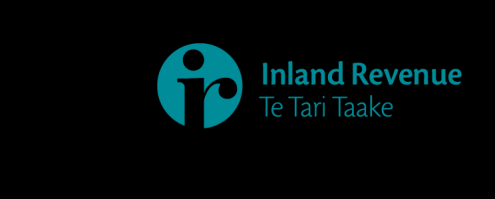
 Appendix A
Appendix A
[IN CONFIDENCE RELEASE EXTERNAL]
Use of Custom Audience on social
media for advertising campaigns
Privacy Threshold Assessment
Date: Updated September 2024
Supply ID: N/A
About this Document
The purpose of this document is to demonstrate that privacy has been considered in a project
or process that involves personal information. The Analysis pulls together relevant information
to determine whether a full Privacy Impact Assessment (PIA) should be completed and records
IR’s decision of why a PIA has not been done. It will answer the following questions:
1. Does this proposal involve a new way of managing personal information?
2. Does the proposal raise a significant privacy risk for IR?
3. Is a full privacy impact assessment required?
Project Summary
1.1 Description
Inland Revenue (IR) uses social media to direct advertising to specific customer groups. This
targeted approach significantly enhances IR’s ability to ensure taxpayers meet their tax
obligations, such as payments or that taxpayers are informed of social policy entitlements.
Social media platforms offer a service called “custom audience” to reach relevant users. The
goal of using custom audience advertising is to display messages to specific taxpayers who
have been identified as being in debt, have upcoming due dates, have potential entitlements,
or need to update their details.
By directing advertising to those who need to see it, IR encourages taxpayer compliance,
increases tax revenue collection, and informs customers of entitlements.
Examples of where IR regularly uses custom audience advertising are:
•
Student loan customers who have debt owing. We separate these audiences into
different segments for accuracy, such as those based overseas, those within New
Page 1 of 15

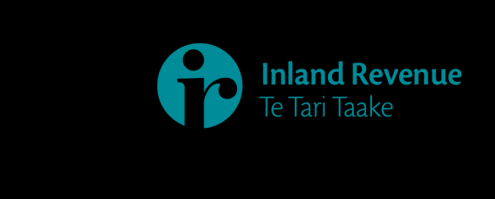
[IN CONFIDENCE RELEASE EXTERNAL]
Zealand who are self-employed, and those based in New Zealand earning salary and
wages.
• GST customers who have returns and/or a debt due.
• Income tax debt – customers who have tax debt and would benefit from setting up an
instalment arrangement to manage this debt.
• Working for Families customers who need to update their information with IR.
IR uses Meta (Facebook and Instagram), LinkedIn and Google for direct advertising. IR does
not upload custom audience lists to other social media such as X (formally known as Twitter)
or TikTok.
A custom audience list is a list of specific customers who Inland Revenue wants to display
advertisements to.
Social media users can control which ads are displayed to them. In both Google and Facebook,
users can view the advertisers whose audiences they have been included in, limit which ads
are shown and can also permanently delete activity data tied to their account. LinkedIn users
can choose whether they see advertising and from which businesses.
How Custom Audience works
IR uploads into its browser a list of identifiers such as names, email addresses or postal codes
belonging to individuals that it wants to target with ads. This data is hashed within the browser
of the IR managed device before being uploaded to the advertising platform.
The data is transmitted from an IR device to the platforms through an encrypted channel
(HTTPS e.g. TLS protocol). The advertising platform will then match the hashed data with its
existing hashed database to create a matched list for an advertising campaign.
For matched hashes, users are added to a Custom Audience stored within the ad manager
account. If a hash does not match, it is ignored. Once the matching process completes, all
hashes – both matching and non-matching – are deleted from the social media platform. IR
ends up with a “custom audience” that it can target with relevant ads. The identity of matched
users is not revealed to IR. This Custom Audience is stored in the ad manager account where
only authorised account administrators can access it. The IR marketing team cannot see
specific individuals who are contained in the Custom Audience, they just see the list name and
approximate number of people that this audience contains.
No third party will have access to the information.
How hashing works
Hashing is a commonly used technique in day-to-day digital life (e.g. logging into a banking
application, checking the integrity of a file you download from the internet etc). Social media
platforms pre-compute the hashed values for every user so if someone uses social media, the
platform will already hold their information in hashed format.
Hashing is a cryptographic security method that involves taking a piece of data - like an email
address - and using math to turn it into a number (called a hash) in a consistent way. The
identifier is transformed into code like a fingerprint of the original data. For example,
[email address] may come out hashed as
wLKziR/6RoXDv1MDaXLH1UNUC9nIVr97jrTnL4TcxsM=.
Page 2 of 15

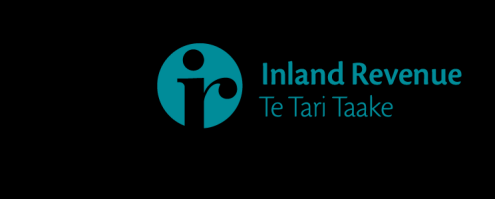
[IN CONFIDENCE RELEASE EXTERNAL]
The hash or fingerprint is difficult to reverse back to the original data. Hashing the same input
data will always create the same hash, but the hashing is one way.
After the matching process, all matched and non-matched hashes are deleted from the social
media platform’s servers. No further processing of the hashed values is performed beyond the
match process.
Prior to using Facebook’s custom audience feature, IR was provided with a 2013 independent
audit report by PWC. This report agreed that specified controls were in place:
• Information provided for matching in the Custom Audience product is not shared with
third parties.
• Safeguards protected the security and integrity of data and guard against the accidental
or unauthorised access, use, alteration, or disclosure of data within Facebook systems.
• Information was only retained for the matching process to be completed. It was then
appropriately disposed of.
Google and Meta advise that information from the customer lists is not used to enhance the
profiles of a user. For instance, no data or flag is added to an individual Facebook user account
as a result of being added to a Custom Audience. LinkedIn says it does not link third party
data to individual member’s activity data. IR’s CISO team is currently seeking updated
assurances from the social media platforms.
Content of advertising/messages displayed
IR’s advertising messages vary, are reasonably generic and not tailored to a particular
customer’s circumstances. For instance, a message might say “Got an NZ student loan and live
overseas? Make sure you make your payment before the 30 September due date”. The ads
don’t say something as tailored as our direct email or letter communications with a customer
e.g. “Get your student loan back on track, make sure to pay here”.
1.2 Legal Authority
Privacy Act 2020
The source information used to collate a custom audience list is ‘personal information’ for the
purposes of the Privacy Act. It is also sensitive revenue information (SRI) under the Tax
Administration Act 1994 (TAA).
The information provided to social media platforms is hashed before it is uploaded, so it is not
personal information for the purposes of the Privacy Act as the individual is not identified.
To comply with other Privacy Act obligations, IR informs customers how it uses information.
IR’
s Privacy Policy states that if a customer gives IR their email address or mobile phone
number, we may use these to send them reminders about their tax affairs or information about
our products and services. The email address is used in compiling the custom audience list.
The Policy also informs the public that IR uses information to target advertising to them
indirectly via a third party:
Why you might see a certain advertisement on social media
We may also use or disclose your information to third parties to assist us to communicate
or market our services to you.
Page 3 of 15

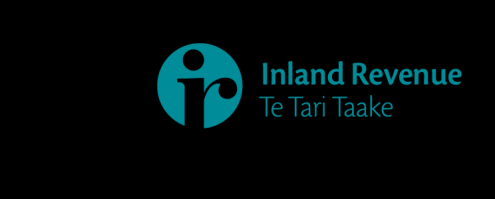
[IN CONFIDENCE RELEASE EXTERNAL]
To reach groups of people with information that is relevant to them while protecting their
privacy, we sometimes provide hashed and fully anonymised information to social media
channels when placing advertisements. In this process, your personal information is
treated with the utmost integrity by us. The social media channel is not given any
identifiable information. We fully comply with our obligations under the Tax Administration
Act and the Privacy Act to protect your personal information.
The Privacy Act does not require an individual to consent to the use of their information.
Tax Administration Act 1994
The TAA restricts the circumstances when tax confidential information can be disclosed. Under
section 18(1) of the TAA a revenue officer must keep confidential all SRI and must not disclose
the information unless the disclosure is permitted under the TAA.
•
Revenue information means information that is acquired, obtained, accessed,
received by, disclosed to, or held by the Commissioner in connection with a revenue law
and
•
SRI means revenue information that identifies, or is reasonably capable of being used
to identify, a person or entity, whether directly or indirectly.
The information used for advertising purposes is SRI, whether hashed or not, as it’s technically
possible for the social media platforms to identify a user - the hashed information is already
held by the platforms. The platforms have policies and terms & conditions relating to custom
audiences. Both Google and Meta do not decrypt hashed data and information from custom
audience lists is not used to enhance the profiles of a user.
Because it’s considered SRI, IR can only disclose the information if disclosure is a permitted
disclosure that meets the requirements of sections 18D to 18J of the TAA. The permitted
disclosure that will apply to a particular advertising campaign will depend on the specifics of
that advertising campaign. The permitted disclosures most likely to apply can be found in
section 18D(1) (“Carrying into effect revenue laws”), section 18D(2) (“Carrying out function
conferred on Commissioner”), and clause 11 of Schedule 7 (“Services necessary for effective
administration of revenue laws”).
1.3 Personal information to be used
In the table below, describe:
• the personal information that will be collected, used and/or disclosed
• the source of the information
• the purpose of the information for your project.
Note: “Personal information” is any information about an identifiable living person. A
person doesn’t have to be named for the information to be identifiable.
Type of personal
Source of information
Purpose of using the
information
information
Meta
IR customer database
To improve advertising
• First name & surname
effectiveness and deliver the
• Email address
Page 4 of 15

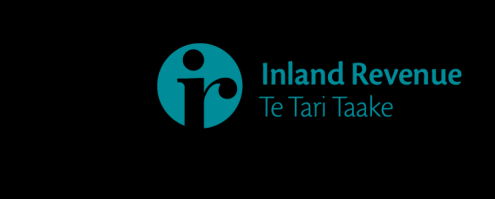
[IN CONFIDENCE RELEASE EXTERNAL]
• City
right message to the right
• Postal Code
customers at the right time
• Country
• Date of birth
Google
IR customer database
To improve advertising
• First name & surname
effectiveness and deliver the
• Phone number
right message to the right
• Email address
customers at the right time
• Country
• Zip Code
LinkedIn – company list
IR customer database
To improve advertising
• Company name
effectiveness and deliver the
• Company email
right message to the right
• City
customers at the right time
• Zip Code
• Country
LinkedIn – individual list
• Contact first name &
surname
• Email address
• Country
1.6 Governance
Outline who has been engaged to date including sponsor or senior leaders, groups that have
been consulted and approvals/endorsement to date.
Name of person or group
Business Unit
Approved, Consulted,
Informed etc
Marketing & Communications
Enterprise Services
Initiator
Privacy Officer
Enterprise Design &
Endorsed
Integrity
Information Security
Enterprise Design &
Endorsed
Integrity
Corporate Legal
Enterprise Design &
Consulted
Integrity
Tax Counsel
Tax Counsel Office
Approved
Page 5 of 15

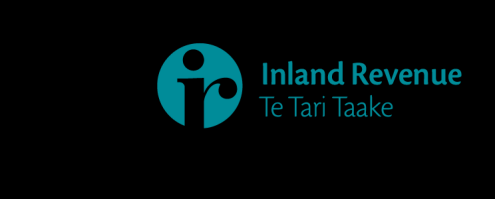
[IN CONFIDENCE RELEASE EXTERNAL]
2. Privacy assessment
2.1 Areas that are risky for privacy
Some types of projects are commonly known to create privacy risks. If the project
involves one or more of these risk areas, it’s likely that a full Privacy Impact Assessment
(PIA) will be valuable.
Use this checklist to identify and record whether your proposal raises certain privacy
risks.
Does the project involve any of the
Y/N If yes, explain your response
following?
N
No substantial change. Traditionally IR
Does the initiative involve a substantial
change to an existing policy, process or
has advertised on websites that people
system?
similar to the intended audience were
likely to visit. Using custom audiences is a
more targeted way of displaying relevant
advertising to specific taxpayers to remind
them of their obligations (for instance to
repay a student loan or set up payment
arrangements for debt) or entitlements
(for instance being eligible for Working for
Families or FamilyBoost).
Is it linked to a practice or activity that is
N
listed on a risk register?
Collection
Y/N If yes, explain your response
N
Will IR be collecting personal information
that it doesn’t currently collect?
Y
It is necessary for IR to collect this
Is collecting this information necessary
for IR to carry out its functions?
information so it can identify and contact
customers. The purpose of advertising is
to perform a function of IR to encourage
taxpayer compliance or notify of
entitlements.
The information is collected directly from
Where or who is the information being
collected from?
customers.
Page 6 of 15

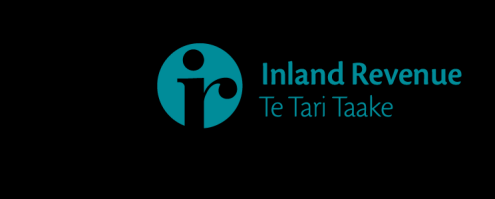
[IN CONFIDENCE RELEASE EXTERNAL]
In their profile settings, social media users
can view the advertisers whose audiences
they have been included in and decide
whether they want to be shown ads.
Storage, security, and retention
Y/N If yes, explain your response
N
The customer list (provided as CSV file) is
Does the initiative change the way
personal or sensitive information is
hashed using SHA-256 within the internet
stored, secured or managed?
browser (IR device) automatically, then
the hashed information is uploaded to the
platform.
IR social media staff cannot access the
plain text or hashes within the platform.
The hashed string does not identify an
individual. The platform owner (Meta,
LinkedIn or Google) does not decrypt the
hash, it is a one-way transform only.
Google and Meta advise that hashed
information is not decrypted, and no data
or flag is added to an individual user
account as a result of being added to a
Custom Audience. LinkedIn says it does
not link third party data to individual
member’s activity data. IR’s CISO team is
currently seeking updated assurances
from the social media platforms.
All platforms use SHA-256 which is
compliant with NZISM standards. This is a
Secure Hashing Algorithm that has been
approved by GCSB.
The hashed data is transmitted using
Where will the information be stored?
HTTPs (TLS Transport Layer Security),
which means that it is encrypted during
transmission using the same technologies
that are used for online banking. The
social media platforms do not retain
hashed data sent to them. It is deleted
soon after the campaign has run.
Page 7 of 15

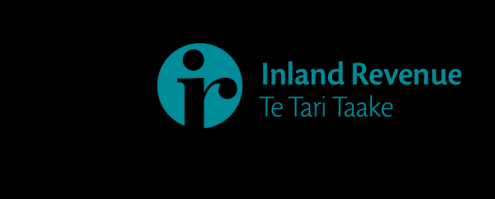
[IN CONFIDENCE RELEASE EXTERNAL]
The custom audience list which contains
the hashed data is stored temporarily by
IR but no individual is identified in the list.
No individual outside of IR can access any
Who will have access to the information?
personal information.
Meta and Google promptly delete
How long will the information be
retained?
customer lists after the match process is
completed - this is regardless of whether
the hashed information is matched or not.
LinkedIn automatically deletes hashed
customer lists within 30 days.
Hashed information is provided to the
Does it involve transferring personal
information offshore, using a third-party
social media platforms which is matched
contractor?
to hashed information already held by the
platforms. The hashed information
uploaded by IR is not retained or stored
by the platforms and meets encryption
standards set out in the NZISM.
Use, disclosure, and accuracy
Y/N If yes, explain your response
Y
Is the information currently held by IR?
The information that is used is held by IR
If yes to the above question, for what
purpose does IR hold the information?
to identify and contact taxpayers.
N
IR obtains taxpayer information to identify
Will the initiative use or disclose
information for a different purpose to
them and contact them about their tax
why it was obtained?
affairs or social policy entitlements.
Sending messages (including advertising)
to taxpayers to remind them of their
obligations is one of the purposes IR
obtains this information and is specified in
IR’s Privacy Policy. Methods of contacting
taxpayers include directly via myIR,
letters, emails or marketing campaigns.
N
Will IR be sharing personal or taxpayer
information with another organisation?
Page 8 of 15

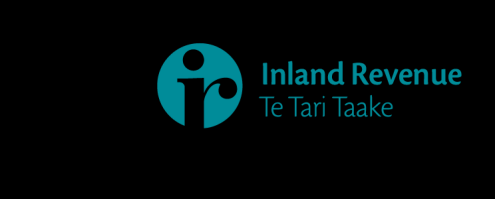
[IN CONFIDENCE RELEASE EXTERNAL]
The information is provided to IR by the
Describe the data quality – is it
accurate, consistent, and complete?
customer so is accurate at the time it is
used. If an individual has changed
address, the Postal Code, Zip Code or City
may not be up to date if the individual has
not advised IR of the change.
N/A
What processes are in place to ensure
and maintain data integrity?
Access and identification
Y/N If yes, explain your response
N
Will the information be stored on a
customer or staff member’s record?
N
Due to the large number of ad campaigns
Does the initiative affect how people can
that IR undertakes, it is difficult to tell an
access information IR holds about them?
individual whether they were included in a
specific campaign. Manual collation would
be required to review the lists to confirm
whether a particular individual was
included and what, if any, information
hashed.
However, Facebook users can see on their
profile if IR has displayed an ad to them.
Customers can always update the settings
on their social media account to stop ads
being displayed.
N
Does this involve a new way of
identifying individuals?
Other considerations
Y/N If yes, explain your response
N
Minimal information is used, and hashing
Can we achieve the project's purpose
using less identifiable data?
pseudonymises the data.
Following a media report by RNZ on 9
Would people be surprised by this use of
their information?
September 2024 some people are
surprised by IR’s use of custom audience
lists.
It is important for IR to contact customers
to remind them of their obligations. Using
social media to display a message is more
cost effective than contacting each
Page 9 of 15


[IN CONFIDENCE RELEASE EXTERNAL]
customer individually to remind them to
set up repayments or pay tax. However,
IRs use of custom audience lists is
currently under review and IR paused its
use of custom audience lists on 12
September 2024.
IR takes steps to protect the underlying
customer information by using hashing
and Facebook and Google advise no data
or flag is added to individual user
accounts as a result of being added to a
Custom Audience. LinkedIn says it does
not link third party data to individual
member’s activity data. IR’s CISO team is
seeking updated assurances from the
social media platforms that the data is not
added to user profiles or used in any other
way.
N
This is information that taxpayers are
If using data that customers have freely
volunteered, would your project
required to provide to IR. It is only used
jeopardise people providing this again in
to display an ad if the customer is
the future?
included in a custom audience and their
profile on a social media platform contains
the same data that has been hashed.
N
Does the initiative involve tracking or
monitoring of movements, behaviour or
communications?
3. Ethical considerations
3.1 Areas that may raise ethical issues
Using and analysing data can introduce risks around the unethical use of data. IR must
ensure it has ethical data practices and processes to maintain customer trust.
Does the project use ethical data
Y/N
If yes, explain your response
practices?
Page 10 of 15

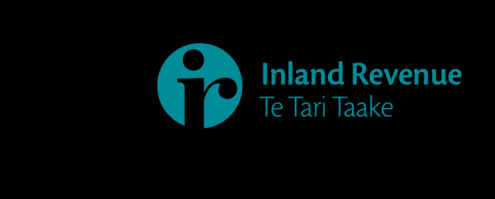
[IN CONFIDENCE RELEASE EXTERNAL]
Is the proposal likely to result in some
Y
Only in so far as these customers have
members of a group being treated
been identified as having tax
differently to one another?
obligations so IR needs to contact them
to remind them of their obligations
which may include setting up
repayments. Some customers are
displayed messages notifying them
they may be eligible for social policy
payments such as Working for Families
or FamilyBoost.
Will the proposal have an impact on
N
vulnerable people or those identified as
disadvantaged?
How are we identifying and managing
N
No bias or discrimination likely. The
bias or discrimination?
populations selected are those that
have debt, are being reminded of a due
date or may be eligible for a social
policy payment.
Can you foresee any harm to individuals
N
IR is displaying messages to selected
in using the data in the way intended?
customers. Seeing an advertisement is
not likely to cause harm to these
individuals.
In their profile settings, social media
users can decide the way their data is
used for advertising. In Facebook they
can also decide whether they want to
be shown ads by specific advertisers
and can stop IR from showing them
ads.
Does the data to be used specifically
N
identify Māori or a Māori collective?
Have you considered how the proposal
N
Ethnicity data is not collected.
contributes to the active protection of
Māori interests?
Use of algorithms or AI
Y/N
If yes, explain your response
If using algorithms or AI is there
N
confidence the output is robust, and
assumptions are met?
Page 11 of 15

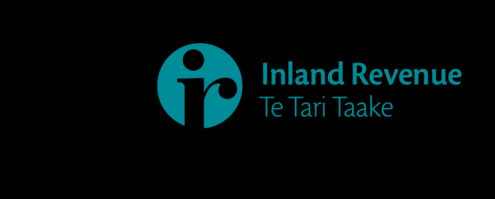
[IN CONFIDENCE RELEASE EXTERNAL]
Will decisions informed by an algorithm
N
or use of AI involve human review and
evaluation?
Will any automated decision-making
N
process be regularly reviewed to make
sure it’s still fit for purpose?
4. Risk assessment
If you answered “Yes” to any of the questions above, use the table below to give a rating –
either
Low (L),
Medium (M), or
High (H) – for each of the aspects of the project set out in
the first column.
For risks that you’ve identified as Medium or High, indicate (in the right-hand column) how the
project plans to lessen the risk (if this is known).
Aspect of the Project
Rating
Describe any risks and how to mitigate
them
Level of information handling
L – Minimal personal information
Low
will be handled
M – A moderate amount of
personal information (or
information that could become
personal information) will be
handled
H – A significant amount of
personal information (or
information that could become
personal information) will be
handled
Sensitivity of the information
The information may include name, date of
L – The information will not be
birth, email address or phone number. No
sensitive (name, IRD number, or
Medium financial or tax information is included.
job title)
Hashed information is provided to the
M – The information may be
platforms. This hashed data is then
considered to be sensitive
matched to hashed data in their existing
(contact details, date of birth plus
database to create a custom audience list
for a particular advertisement campaign.
Page 12 of 15

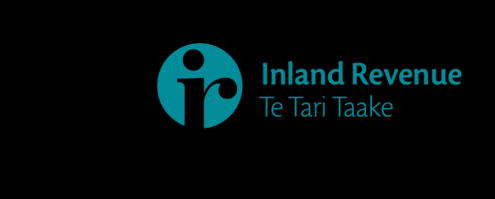
[IN CONFIDENCE RELEASE EXTERNAL]
name plus IRD number, financial
information, biometric data)
In order to be matched, the social media
platform must already hold the hashed
H – The information will be highly
information. It will hold this information
sensitive (health or financial
only if the individual has provided this
details, information about high
information to the social media platform.
profile individuals)
No third party has access to the
information. Google, Meta and LinkedIn
policies state that no information from
custom audience lists is used to enhance
the profiles of a user.
Significance of the changes
Traditionally IR has advertised on websites
that people similar to the intended
L – Only minor change to existing
audience were likely to visit. Using custom
functions/activities
Low
audiences is a more targeted way of
M – Substantial change to
displaying relevant advertising to specific
taxpayers.
existing functions/activities; or a
These taxpayers may be non-compliant and
new initiative
have not responded to IR contacting them
H – Major overhaul of existing
directly.
functions/activities; or a new
IR also uses social media to inform
initiative that’s significantly
taxpayers of social policy entitlements such
a FamilyBoost or Working for Families.
different
Interaction with others
Use of social media includes the risk there
may be an inference available to platforms
L – No interaction with other
that the ad recipients are student loan
agencies
Medium holders or tax filers (depending on the ad
message).
M – Interaction with one or two
other agencies
The platforms have policies and terms &
H – Extensive cross-agency (that
conditions relating to custom audiences.
Both Google and Meta state they do not
is, government) interaction or
decrypt hashed data and information from
cross-sectional (non-government
custom audience lists is not used to
and government) interaction
enhance the profiles of a user. For instance,
no data or flag is added to an individual
Facebook user account as a result of being
added to a Custom Audience. LinkedIn says
it does not link third party data to individual
member’s activity data. IR’s CISO team is
currently seeking updated assurances from
the social media platforms.
Seeing an IR ad does not necessarily mean
the user is non-compliant. Messages vary,
are reasonably generic and IR does general
advertising at certain times of the year.
Public impact
Information is used for the purpose of
channelling relevant advertising relating to
Page 13 of 15

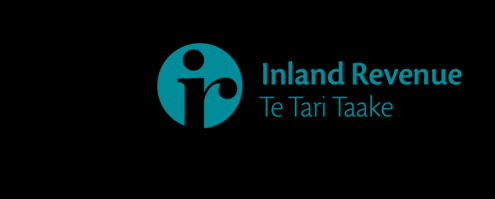
[IN CONFIDENCE RELEASE EXTERNAL]
L – Minimal impact on IR and
tax compliance or social policy entitlements
customers
to a specific group, for example, student
loan holders or customers due to file tax
M – Likely to have some impact
Medium returns.
on customers due to changes to
The use of web advertising is for the
the handling of personal
purpose of carrying out IR’s function to
information; or changes may
administer or implement the tax system by
facilitating taxpayer compliance, educating
raise concern or media attention
taxpayers on how to get it right, and
H – High impact on customers
maximising revenue collection. The impact
and the public, and concerns over
on customers is that they will see messages
from IR and be reminded of their
aspects of project; widespread
obligations or informed of social policy
media interest likely
entitlements.
5. Summary of privacy impact
The privacy impact for this project has been assessed as:
Tick
Low – There is little or no personal information involved; or the use of
personal information is uncontroversial; or the risk of harm eventuating is
negligible; or the change is minor and something that the individuals
concerned would expect; or risks are fully mitigated
Medium – Some personal information is involved, but any risks can be
mitigated satisfactorily
High – Sensitive personal information is involved, and/or several medium to
high risks have been identified.
You must complete a full Privacy Impact
Assessment
Inadequate information – More information and analysis is needed to fully
assess the privacy impact of the project.
6. Reasons for the privacy impact rating
The privacy impact rating is
Medium for the following reasons:
• IR has a lawful purpose to contact taxpayers and remind them of their tax obligations
or inform them of social policy entitlements.
• IR can legally use taxpayer information to support a duty or function of the
Commissioner of Inland Revenue.
• IR has various channels it uses to contact taxpayers including myIR, phone, letters, text
messages, emails and advertising.
Page 14 of 15

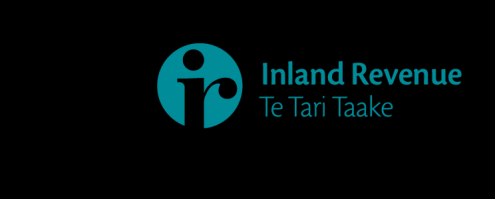
[IN CONFIDENCE RELEASE EXTERNAL]
• IR creates custom lists of potentially relevant audiences specific to a campaign (e.g.
Student Loan, GST customers, Working for Families etc.) through data provided by
customers.
• Minimal information is used to identify who may be included in a custom audience list.
• IR only shares hashed information with advertising platforms. Hashing is a commonly
used technique to protect data.
• Hashing happens within the IR managed devices and the data is transmitted to the
platforms through an encrypted channel (HTTPS e.g. TLS protocol).
• No third party has access to the information.
• Google and Meta policies state that no information from custom audience lists is used to
enhance the profiles of a user.
• The potential risk of hashing is that a malicious actor could crack hash values from a
compromised data set. The dataset is usually obtained from a cyber security breach.
This is mitigated by the data not being stored, using robust techniques (SHA-256) and
the information that could be compromised is already available on a user’s account.
7. Document sign-off
Position
Business Unit
Sign-off Date
Business Owner
Marketing & Communications,
18 Sept 2024
Enterprise Services
Privacy Officer
Enterprise Design & Integrity
18 Sept 2024
Chief Information Security
Enterprise Design & Integrity
18 Sept 2024
Office
Page 15 of 15
Document Outline







































